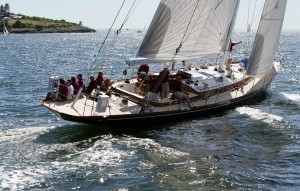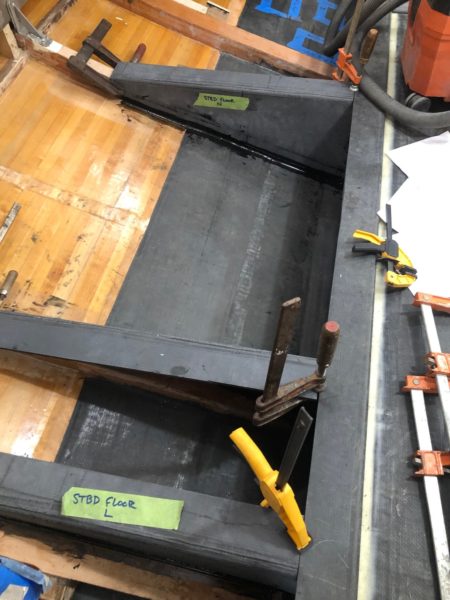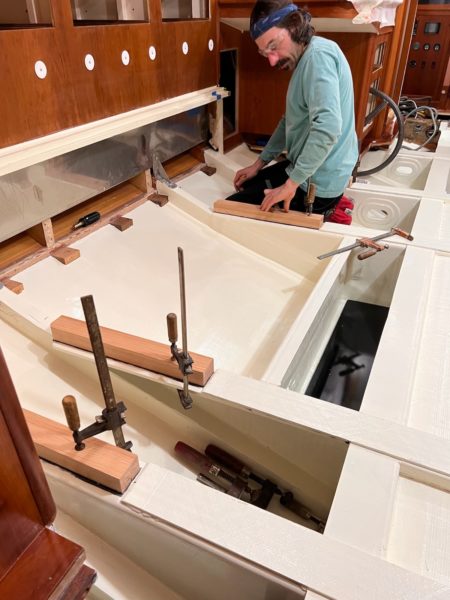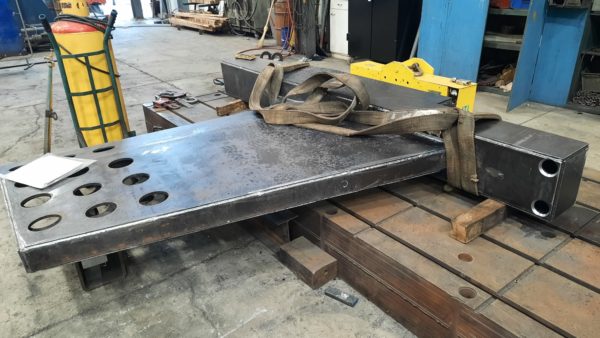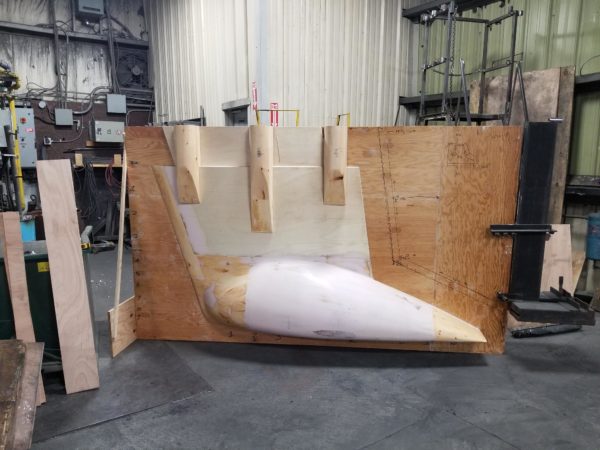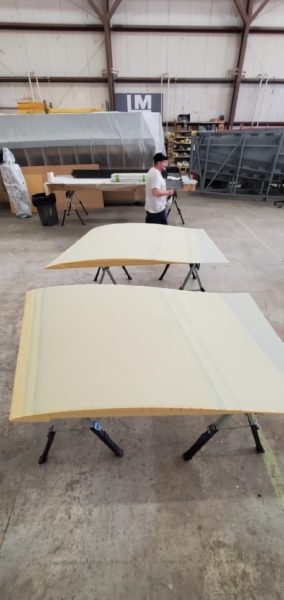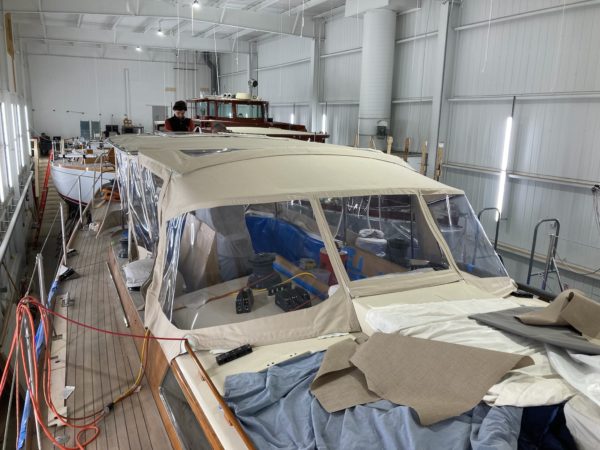We’re thrilled to share an update on the progress of Zemphira as work continues at full tilt for her to hit the water again this spring. Here’s the latest on her work at the Lyman Morse Boatyard.
The Latest:
The internal carbon reinforcement frame has been installed around the new molded bottom replacement and keel socket, taped in place, and smoothed and painted. The systems are starting to go in: lithium-ion batteries nested into bays in the carbon grid, each side of and aft of the socket, and collapsible fuel-cell-style diesel tanks in specially-designed compartments within the structure. The new keel is being fabricated at Mars Metal in Canada, due to arrive in April. A composite foil-shaped upper fin is being made in two halves at Lyman Morse, to be bonded over the steel structural strut to complete the keel’s fin after installation.
Hull Replacement Part Bonded: Here’s a view of the carbon/foam replacement part mated to the original wood/foam/carbon hull structure. A specially-designed scarf/lap joint assures full strength is transferred across the joint. New carbon floors are bonded to frames but not yet taped in place. Credit: Robert Stephens/SWD
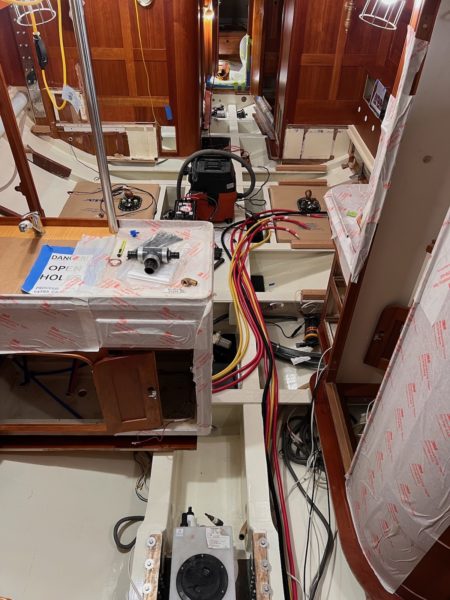
Looking forward from companionway into saloon: The completed carbon grid, made of L-shaped molded structures, taped together and into the hull, and bonded to the original laminated Douglas Fir frames and faired and painted. Photo Credit Tyler Eads/Lyman Morse.
Looking aft toward starboard nav station: Wooden sole bearers getting placed on the top flanges of the carbon floors. In the upper left can be seen reinforced penetrations for plumbing runs through the floors. Soon a new prefabricated starboard settee will be installed in this space. Photo Credit Tyler Eads/Lyman Morse
The steel structural strut for the replacement keel. The long rectangular part at upper right fits into the molded carbon socket in the hull. The two holes at far right will accept sleeves for the tension “fuse” bolts that secure the plug in the socket and are designed to fail in tension in a hard grounding, allowing the keel to swing against a crush section at aft end of the socket to absorb catastrophic impact. The series of holes at the lower end of the rectangular strut will be embedded in the cast-lead keel, eliminating the need for keel bolts. The upper portion of the steel strut will be encased in a fiberglass and foam foil-shaped fairing. Credit: courtesy Mars Metal
Here’s a half-pattern for sand-casting the lead lower fin and bulb, built by Mars Metal from our 3D model and 2D full-size lofting. This will be fit into a rectangular box and have casting sand rammed around it, then removed. Its opposite half will be mated to it for casting. The large half-cylinders are the “sprues” or passages for pouring the molten lead into the mold; they’ll be sawn and ground off after casting. The narrow rectangle at top is the socket to locate the steel strut, which will be secured in place during casting and locked to the casting when the lead cools and solidifies. Credit: Courtesy Mars Metal
Two half-foils CNC-carved from PVC foam by Lyman Morse’s four-axis CNC machine from SWD-created 3D files. These will be sheathed in relatively thick fiberglass/epoxy skins and bonded in place over the steel keel strut above the lead casting, with a reinforcement plate at front end for impact, and taping across the centerline joint. They include recesses on their insides to accept the steel strut. Photo Credit Tyler Eads/Lyman Morse
As part of Zemphira’s refit last year, we also designed a dodger and full-enclosure bimini, for when she steps back from SoT racing and becomes the owner’s casual cruiser along the Maine coast. The dodger is stand-alone, but can be connected to the bimini, which also has full side and rear curtains with openings that allow sailing with full weather protection. The bimini fits into flush sockets in the coaming and can be removed and folded to stow in the yacht’s container when not in use. Credit: Tyler Eads/Lyman Morse
Past Zemphira Stories
